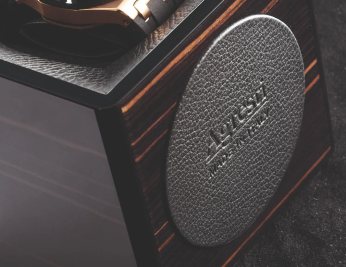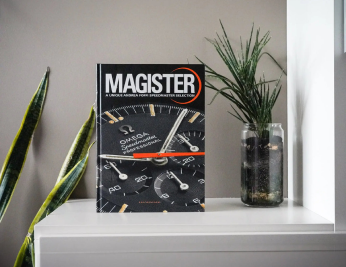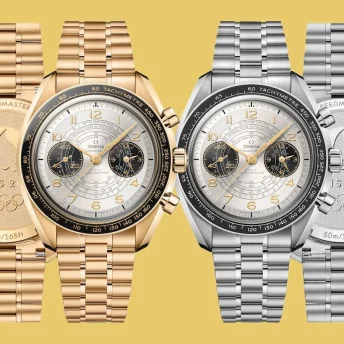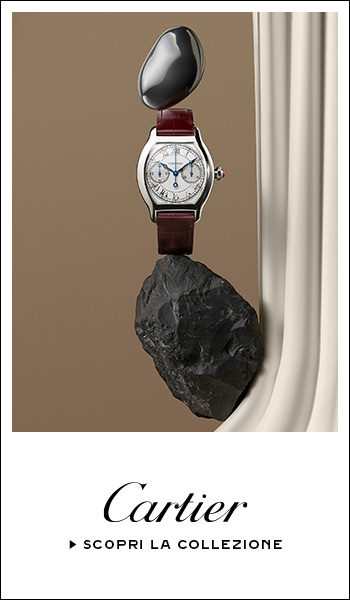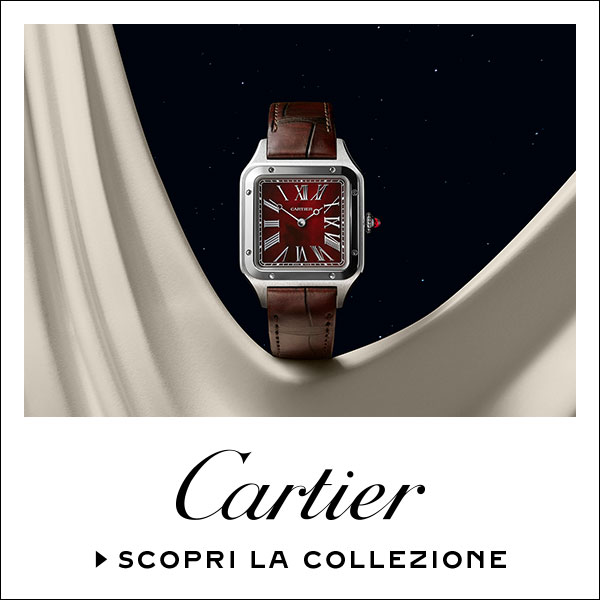Today, we are back at it with an article on another fundamental cornerstone in horology: the chronograph. We’ll explore this from Tudor’s perspective, as they are one brand in particular that have very close ties with this complication.
Describing Tudor as “underrated” is quite possibly the biggest understatement in the watch world. The brand doesn’t get as much love and attention as it should, because of its relation to Rolex: the general consensus (which, thank God, is changing) is that Tudor is Rolex’s “little brother”, and as such, isn’t taken as seriously.
Founded in 1926 by Hans Wilsdorf (yes, the same guy who founded Rolex) through the Veuve de Philippe Huter household, it was originally named “The TUDOR”, and was envisioned as a brand to maintain the same standard of horology as Rolex, but with a more approachable price tag. This has always been the Tudor mantra.
“For some years now I have been considering the idea of making a watch that our agents could sell at a more modest price than our Rolex watches, and yet one that could attain the standards of dependability for which Rolex is famous, I decided to form a separate company, with the object of making and marketing this new watch. It is called the Tudor Watch Company.”
– Hans Wilsdorf

Early models
Over the course of the years, Tudor has made all sorts of watches. One of the most notable models is the Oyster Prince, which, when launched in 1952 by order of Wilsdorf himself, shared both the Rolex Oyster Case and the original automatic movement with the Perpetual rotor.
Their first Chronograph
As mentioned before, Tudor has a very diverse horological portofolio, and in 1970, they manufactured their first chronograph. The early iterations were named the “Oysterdate”, and marked a turning point in the industry.
The early Oysterdates were housed in a 39mm case – large by that era’s standards – and came with dial configurations that were really “out there”, but hey, it was the 70s. Two references were made: the 7031/0 and the 7032/0, and both shared the same grey dial and the quirky pentagonal hour markers.
This was a bold strategy, and it certainly paid off: the vibrant colours, tasteful dimensions and a lovely manually-wound Valijoux 7734 movement was a winning combination, and garnered the interest of watch enthusiasts worldwide. Tudor’s close rapport with Rolex was manifested on the watches through the crown bearing the the unmistakeable Rolex logo, as well as the caseback being engraved with “Original Oyster Case by Rolex Geneva”.

Immediate successors
1971 – Oysterdate Montecarlo
Riding on the wave of the first Oysterdate’s success, just one year later, in 1971, Tudor launched the second generation of the chronograph, this time bearing the name Oysterdate “Montecarlo”. These chronographs were characterised by even more vivacous and funky colours. In fact, the name takes inspiration from the coloured discs of the roulette wheels that you would find in the Monégasque casinos.
Tudor chose to stay with the 39mm case, but swapped the old caliber with a new higher-performance and more reliable movement: the manually wound Valijoux 234. The cal. 234 operated with 21600 beats per hour (6 Hz) and, combined with a revolutionary column wheel chronograph mechanism, guaranteed precise timekeeping. The ref. 7169/0 was an instant hit aesthetically, too. The removal of the classic tachymetre bezel brought forth a beautiful blue, grey and orange rotating bezel that could also be used as a GMT function.

1976 – Oysterdate Big Block
In 1976, Tudor made yet another mark in the watch world, and launched their new Prince Oysterdates: the first chronographs to be powered by an automatic movement.
Design-wise, it’s pretty much the same, apart from being a little bit thicker to accommodate for the larger automatic movement. Not much changed in terms of physical appearance. This thicker case led to enthusiasts nicknaming this reference the “Big Block”. With the advent of this new series, the designers at Tudor split into two teams. One kept on pushing the boundaries with funky colour combinations (like the already successful blue-grey-orange). The other worked to grow their more conservative audience by coming up with black and white colour schemes.

1995 – Prince Oysterdate
In 1995, the fourth generation of Tudor chronographs was released: the ref. 79200. The hefty effect of the “Big Block” was slightly softened by various design and geometrical modifications, most notably through the work done to the bezel. The plexiglass insert was substituted by a black anodised aluminium ring with white decaled indices.
Tudor’s ref. 79200 also got a mechanical upgrade: the Valijoux 7750 caliber was modified, tweaked and was made a whole lot better. Moreover, the dials became more sophisticated, being offered with a white or silvered dial with cream coloured sub counters.
This series marked Tudor’s 50th anniversary, and the brand wanted to become its own. As such, all ties to Rolex on the timepiece, such as the caseback engraving, crown logo and bracelet inserts, were removed.

The Tudor chronograph today
Presently, Tudor offers quite a large selection of chronographs, with ample opportunity for personalisation.
The Geneva-based watchmaker has really upped their game in pretty much all their departments.
Mechanically, Tudor has developed a splendid in-house movement – the MT5813 – which adds a whole lot of value to the watch. In terms of dimensions, the brand has accommodated for today’s tastes, whilst also not overdoing it: many of their watches measure 41mm in diameter: not too big, but certainly not too small, either. Materials wise, Tudor is one of the few brands which really listens to what watch enthusiasts are saying: they want different types of steel? They’ve manufactured pieces with different types of steel. If the market wants PVD, Tudor delivers with PVD.
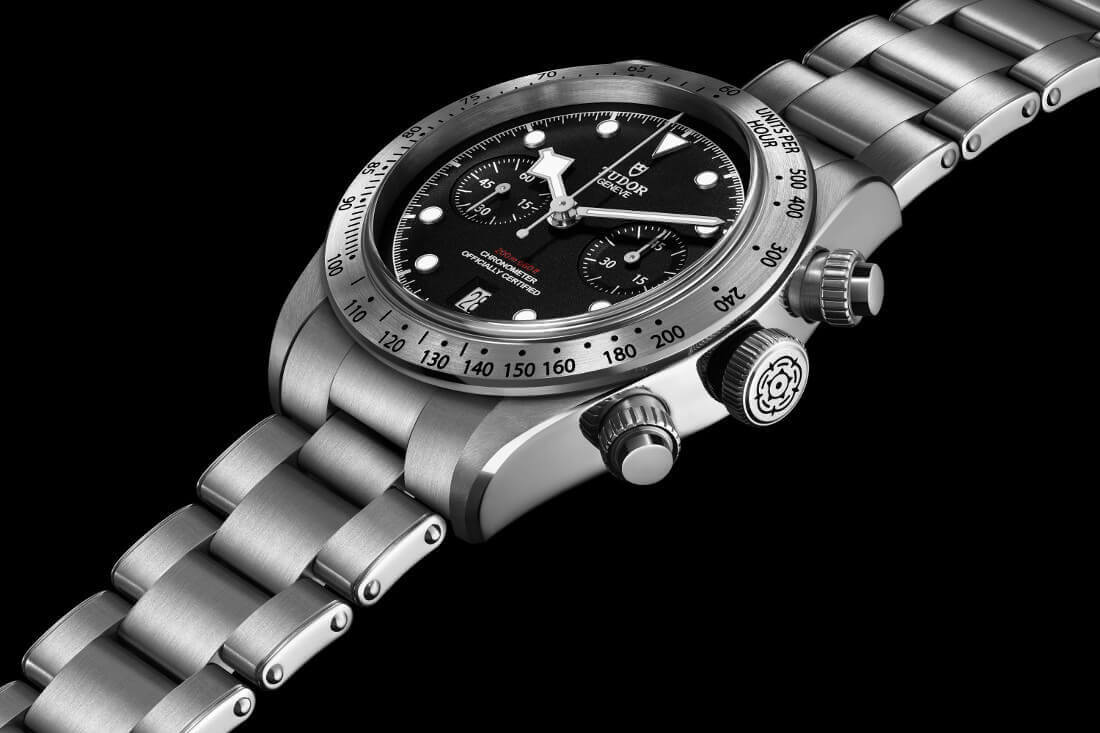
The reference that has caught our attention the most is the M79363N-0001, also known as the Black Bay Chrono S&G.
The inclusion of gold on the central links of the bracelet; crown; screw-down pushers and in places on the bezel is a calculated move: it’s by no means “in your face”, but it gives that little touch of elegance and class to the timepiece, adding an alternative profile to the sports watch. The matte black dial features slightly concave champagne coloured sub counters, which compliment the tasteful use of gold throughout the watch.
The final product is an unbelievably beautiful chronograph, which helped the Tudor Black Bay collection establish an even greater presence in the watch market, as well as help spark the return of the steel-gold configuration. Only downside? It’s gold capped, which may fade with heavy usage over time.
On the market
For the most part, the Tudor market has remained pretty much unchanged, but in recent years, some appreciation has been observed (both sentimental and financial). In fact, prices for various Tudor models are in the range of €3,000 to €6,000, with the exception of the aforementioned Tudor Montecarlo – a chronograph icon by all standards – whose aftermarket asking price is between €12,000 and €20,000, primarily influenced by factors such as condition, box and papers, and subtle colour-scheme variations.
Instead, the Black Bay Chrono S&G retails for €6,500 , a very modest price in comparison to the king of sports watches right now: the Rolex Daytona. The price is absolutely appropriate for the “amount” of watch that comes with it, and in terms of quality, there is very (very, very) little difference in quality between this watch and even the most expensive Rolexes: remember Hans Wilsdorf’s very own words!
Sure, the Daytona has a rich history, as well as many famous co-signs, and a greater general appeal to it. It’s become a real status symbol, and is a great “investment watch”: the prices for Daytonas are at an all-time high and, while it might seem unfair to compare it to the Tudor, one must understand that if you want to have an entire legacy on your wrist, you must take the good with the bad and be prepared to spend a whole lot more.
– Translated by Patrick R.

